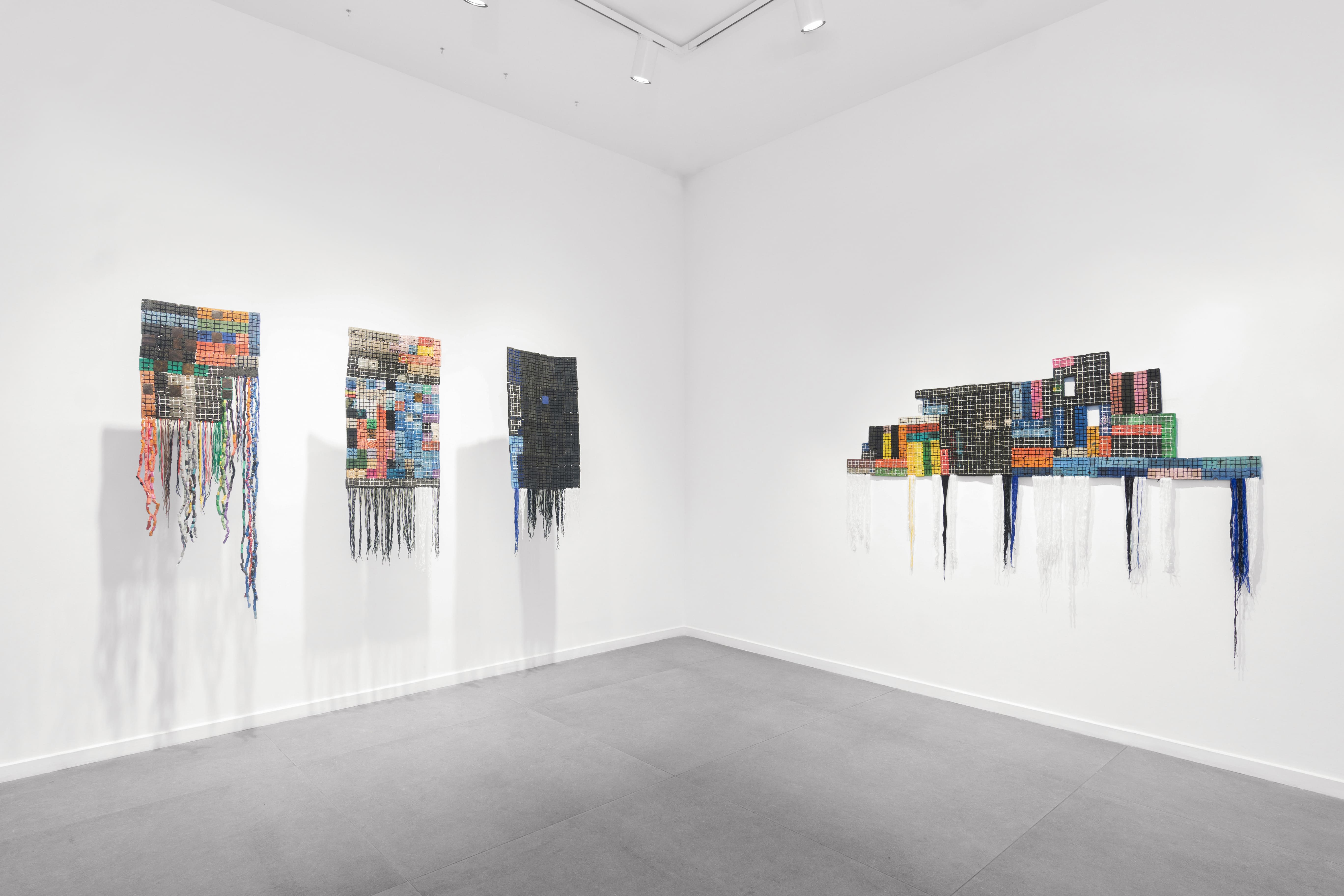
ANTANANARIVO
NOVEMBER 8 - DECEMBER 7
Fondation H presents Fihavanana, mitam-pihavanana, a solo exhibition by Andri Marcel (born Andrisoa Marcel Josoa Rakotonandrasana), runner-up of the 9th edition of Prix Paritana.
An architect by training and a self-taught artist born in 1995 in Antananarivo, where he lives and works, Andri Marcel has developed since 2010 a distinctive mosaic practice using recycled materials, at the crossroads of sculpture and painting.
Worn-out flip-flops — rubber or plastic sandals at the end of their life — become in his hands fragments of memory and traces of lived experience. Cleaned, cut, and assembled into mosaics, these remnants form faces, silhouettes, and landscapes that bear witness to everyday life and the imprint of a shared ground. Alongside these colorful pieces of soles, Andri Marcel incorporates kapoaka — rusted condensed milk tins marked by rainwater — adding another symbolic dimension: that of measure. In Madagascar, the kapoaka serves to measure rice, corn, salt, and other products sold in local market stalls. By incorporating this object into his compositions, the artist evokes the value of what is necessary, the weight of daily life, and the fragile balance between subsistence and solidarity.
Presented as part of Prix Paritana 2025, the exhibition explores the concept of fihavanana, a fundamental principle of Malagasy social cohesion that embodies mutual support, solidarity, and reciprocity within a community. It grounds human relationships in mutual respect and recognition of others. In traditional Malagasy society, fihavanana takes root within the family, extends to neighbors, and reaches the wider village, forming a living fabric of interdependence. Mitam-pihavanana literally means “to uphold fihavanana.” Through this expression, the artist reflects on the fragility of this bond in contemporary society, marked by social fractures.
During his Paritana residency, Andri Marcel experimented for the first time with a mixed technique combining mosaic and bemiray (patchwork). This approach evokes the idea that society, like a piece of fabric, holds together through the union of diverse fragments. Each work in the exhibition becomes a metaphor for connection: gathering what is broken, mending what unravels, and holding together what remains. Fihavanana, mitam-pihavanana stands as a tribute to the persistence of togetherness — an invitation to rediscover, in the simplest gestures and humblest materials, the strength of the collective and the shared memory of a common world.